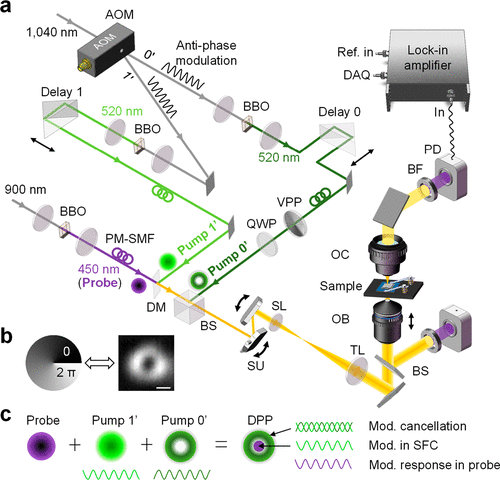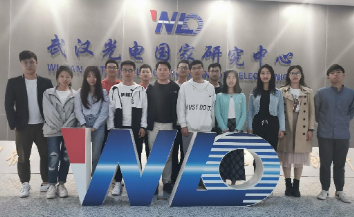The collaborative research from Prof. Wang Ping, Prof. JinsongXia and Prof. Yi Wang of Huazhong University of Science and Technology,was published online in Nano Letters. This research work demonstrated an anti-phase demodulation pump-probe (DPP) super-resolution microscope for direct opticalinspection of integrated circuits (ICs) with lateral resolution down to60nm. Meanwhile, this super-resolution concept can be extended to other fields.
Super-resolution optical imaging is the most important breakthrough in the field of opticalmicroscopy. Although the imaging resolution can reach tens of nanometers, it usuallyreqiuresexogenous fluorescent labels. However, all ICsmainly consist ofconductivemetalsand semiconductors,are not applicable for fluorescentlabeling.Thus,the expensive tools, such as scanning electron microscopy (SEM) and atomic force microscopy (AFM) are routinely implemented. But,the imaging processes become laborious due to requirement of vacuum and time-consuming sample preparation.
The researchers reported an antiphase demodulation pump-probe (DPP) super-resolution microscope and demonstrated the unique capability of imaging SWCNT and graphene with a spatial resolution of 61 nm. Attributed to the strong pump-probe (PP) signal from copper, the team performed super-resolution imaging of the copper interconnects, revealing the fine metal structures with 78 nm in width. Furthermore, the cross-sectional image depicts the complex metal connections in the CPU from M10 layer down to M1 with great details. This in-situ and label-free nanoscopy provides an optical alternative for IC chip inspection.

Figure 1. Schematic of DPP microscopy.(a) Experimental schematic of the DPP system; (b) Phase diagram in VPP and measured donut-shape PSF; (c) The principle of DPP system.

Figure 2. Super-resolution imaging of SWCNTs and graphene.

Figure 3.Cross-sectional images of CPU obtained by SEM and DPP.
Dr.Guang Yang and Chi Yangare the first authors with same contribution. Prof. Wang Ping, Prof.Jinsong Xiaand Prof.Yi Wangare the corresponding authors. This work is in cooperation withProfessorQuan Yuanfrom Hunan University and Zongsong Ganfrom Huazhong University of Science and Technology, China.The Wuhan National Laboratory for Optoelectronics of Huazhong University of science and technology is the first unit.
The research workwassupported bythe National Natural Science Foundation of China 62075076, Science Fund for Creative Research Group of China (61421064) and Innovation Fund of the Wuhan National Laboratory for Optoelectronics.

Article links
https://doi.org/10.1021/acs.nanolett.1c00403